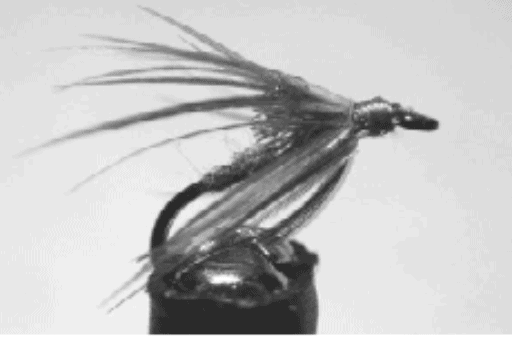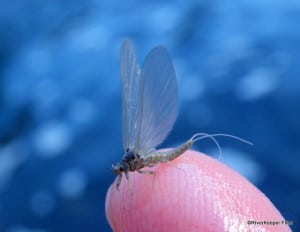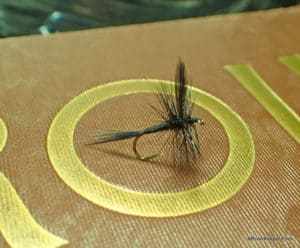This week’s Throw Back Thursday Fly is the Granam or Green-Tail fly.

I thought this was a good fly to go along with the Mother’s Day Caddis post about the American Grannom.
I’ve told you before that my Throw Back Thursday Fly segment celebrates older flies and that “old” is in the eye of the beholder. Well, the Granam or Green-Tail is over 250 years old!

This fly was listed in an old fly fishing book by Charles Bowlker, the Art of Angling. In my quick research, it is interesting to me that the citation stated Bowlker died in 1779, so I completed more research.
What I found is the Art of Angling was an improvement to his father’s original book known as The Universal Angler. That’s actually the short title and now I know why.
The title page of the 1766 version was “The Universal Angler; or, That Art Improved, In All It’s Parts, Especially in Flyfishing: describing the several sorts of fresh-water fish, with their preferred baits. Also, the Names, Colours, and Seasons of all the most useful flies: together with directions for making each fly artificially, in the most exact manner. The whole interspersed with many Curious and Uncommon Observations. Adorned with CUTS of the several FISH herein treated on.”
The original edition was “improved” multiple times, perhaps by Richard and then his son, Charles Bowlker. Other information stated the 1806 and 1814 editions were published by his son. I’m guessing he published earlier versions as well.
I found the Art of Angling was first published before 1759. One citation stated 1747. Other published dates include 1758, 1766, 1786, 1788, 1792, 1826, 1829, 1833, 1839, and 1854.
Here is the first excerpt from Charles Bowlker’s Art of Angling (1854) about a Grannom caddisfly I found. (Notice how our spelling is different than Bowlker’s version)
“If the weather be warm, this fly makes its appearance in the beginning of April, and it continues on the water about a fortnight ; it is a delicate fly, and but seldom seen on cold days. It derives the name of Green-Tail from a bunch of eggs, of a green colour, which it deposits on the water while floating on the surface. The wings lie flat on the body, and are made of a shaded feather from the wing of a partridge or hen pheasant ; the body of the dark fur of a hare’s ear, and a yellowish grizzled cock’s hackle for legs ; a small quantity of bright green wax (or green harl from the eye of a peacock’s tail), about the size of a pin’s head, may be applied to the lower part of the body, after the fly is completed, for the tail, and it has a very natural appearance ; the hook No. 9. This fly is to be fished with from seven o’clock in the morning till eleven, at which time the March Brown comes on, and so long as the Brown continues, the fish will not take the Granam ; from five in the evening till dark it may again be used with success.”
The 1826 edition includes for the first time a fly plate. I didn’t see this illustration in earlier editions. The Granam or Green-Tail is depicted as fly number 6 (second row, far left).

The 1826 verbage is different than 1854, more concise.
I tied the fly shown above on a Tiemco 100 #14 hook, butt of peacock, body of Hare’s Ear, grizzly hackle, and Hungarian Partridge wings.
Lastly, for you history buffs who would like to read an old book, here is a PDF copy of the 1854 book, listed as a new edition, revised.
Art of Angling by Charles Bowlker
This book has been digitized by Google Books and the copyright has expired, so it is now in the public domain. This copy was from the University of California.
Enjoy…go fish!







Your doing a great job. I recommend this site to our club members.
Thanks Butch! Good to know you like RiverKeeper Flies.
John
Great job your doing with this site.